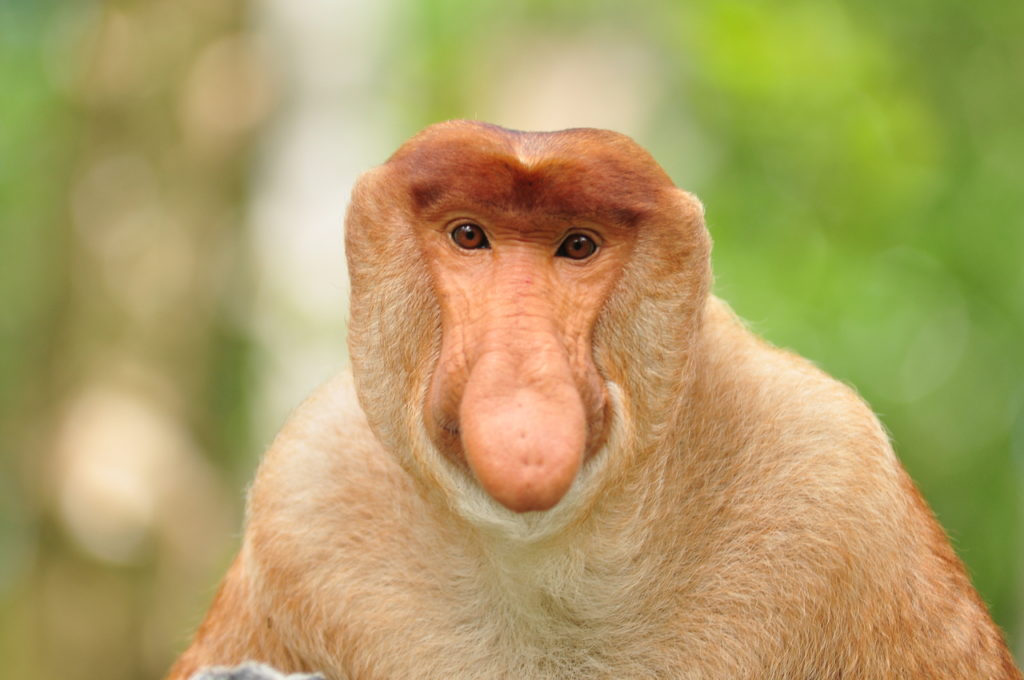Deep in the jungles of Borneo lives the large-nosed proboscis monkey. As a result of deforestation, there aren’t many of these monkeys left. Still, zoos aid their conservation by housing them and raising awareness.
This weird monkey isn’t as well-known as many others. Unlike gorillas, chimpanzees, and orangutans, you may not have heard of them at all. But take one look at the proboscis monkey, and you’ll know why they’re unforgettable.
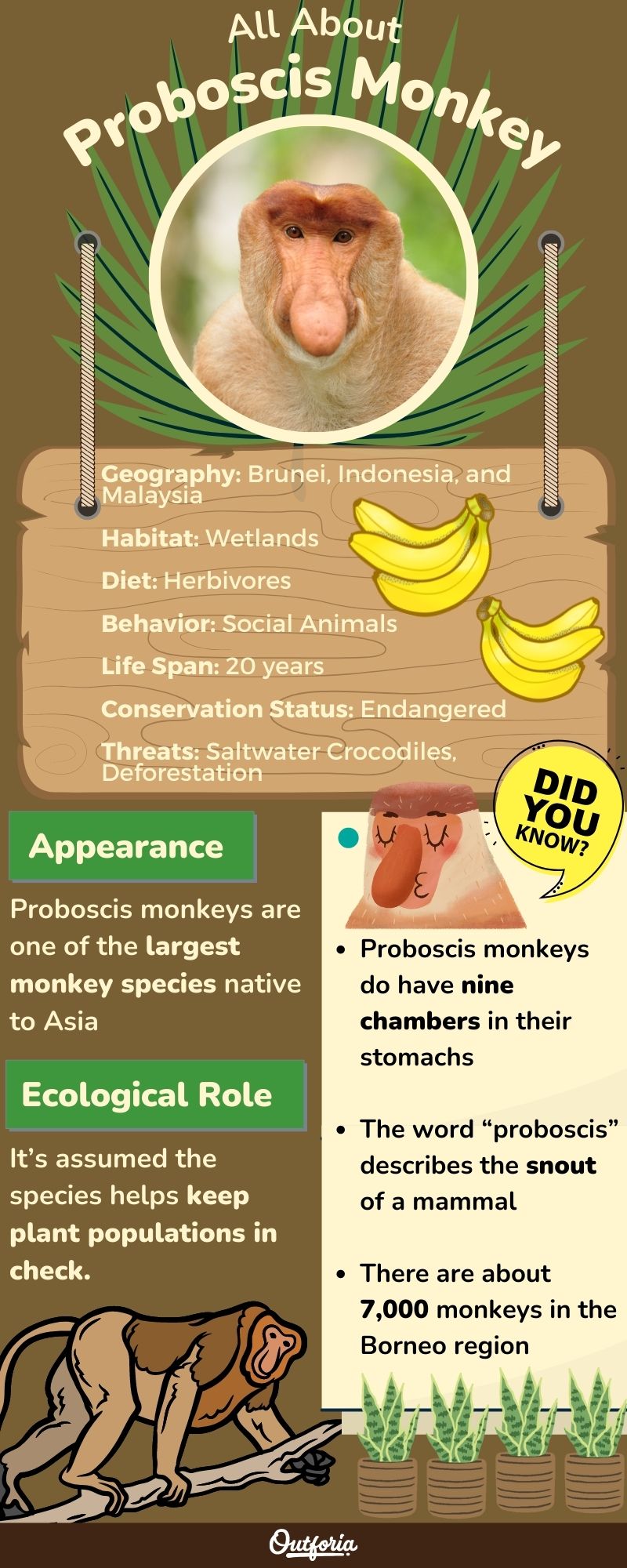
Share This Image On Your Site
You May Also Like: The 7 Smallest Monkeys In The World: Pictures + Facts
The Proboscis Monkey
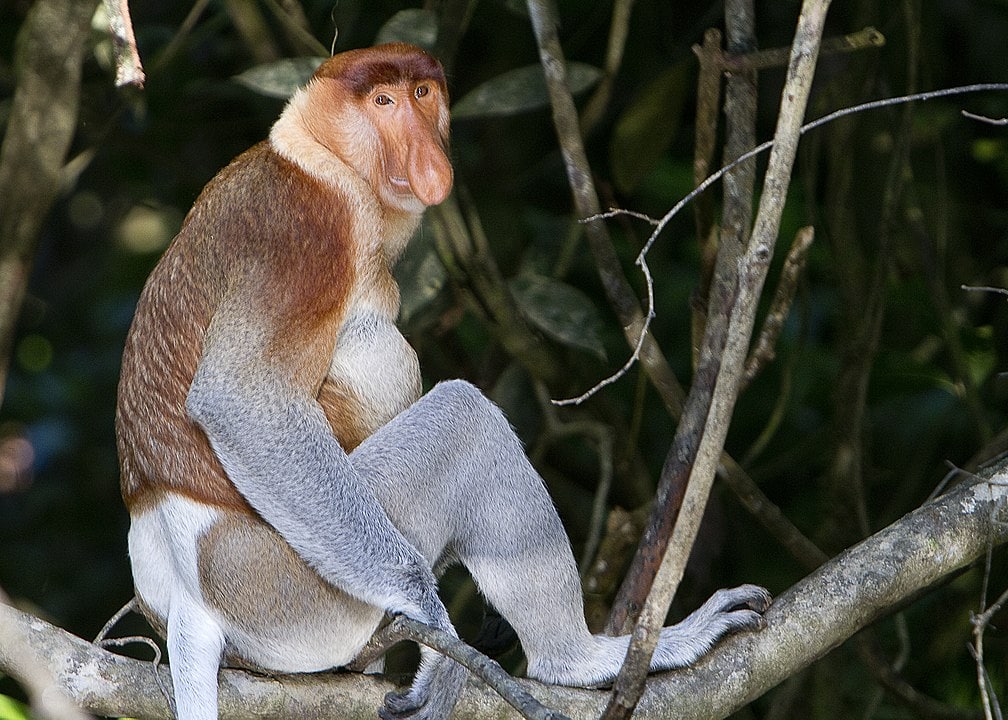
The proboscis monkey is a medium-sized, old-world primate. They’re well-known for their massive nose. The locals call them “bekantan”, and we sometimes call them the “long-nosed monkey”.
But what makes this monkey stand out from other types of monkeys? Read on and find out!
Appearance
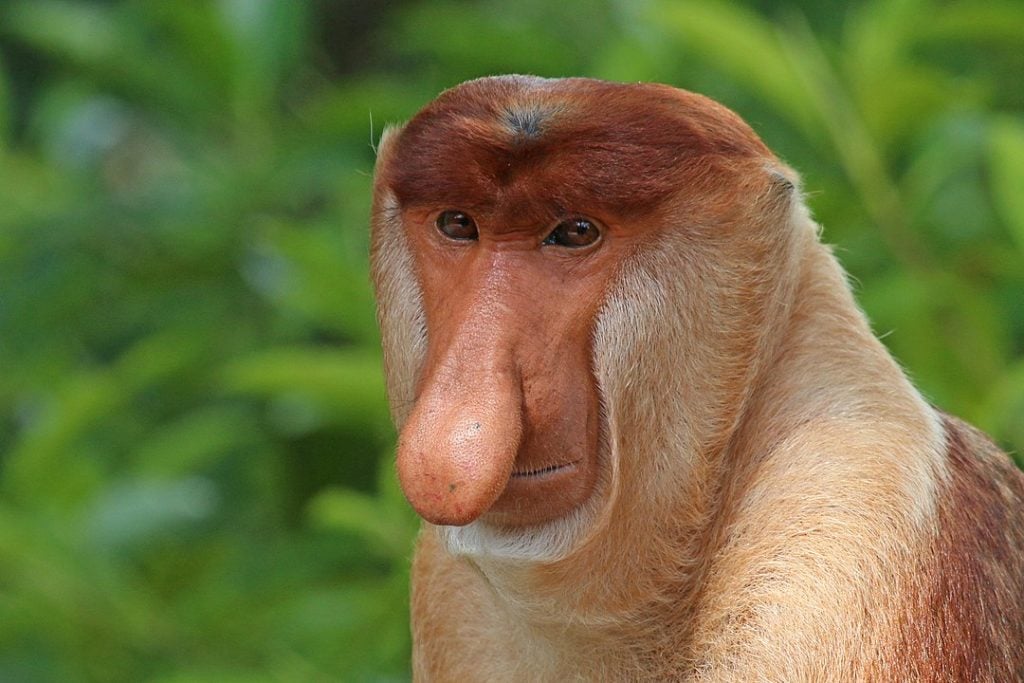
Proboscis monkeys are one of the largest monkey species native to Asia. The males weigh about 50 lbs (22.7 kg), while females are mostly half this size.
They have an average length of 22-28 in (56-72 cm). Their tails are about the same length as their body.
Their coats are brownish-red from their heads to the tops of their shoulders. It turns dark gray down the arms, legs, and tail.
Only males have large eggplant-shaped noses. Their noses reach up to 7 in (17.8 cm) in length. They use their black, fleshy noses for mating and attracting females.
Geography & Distribution
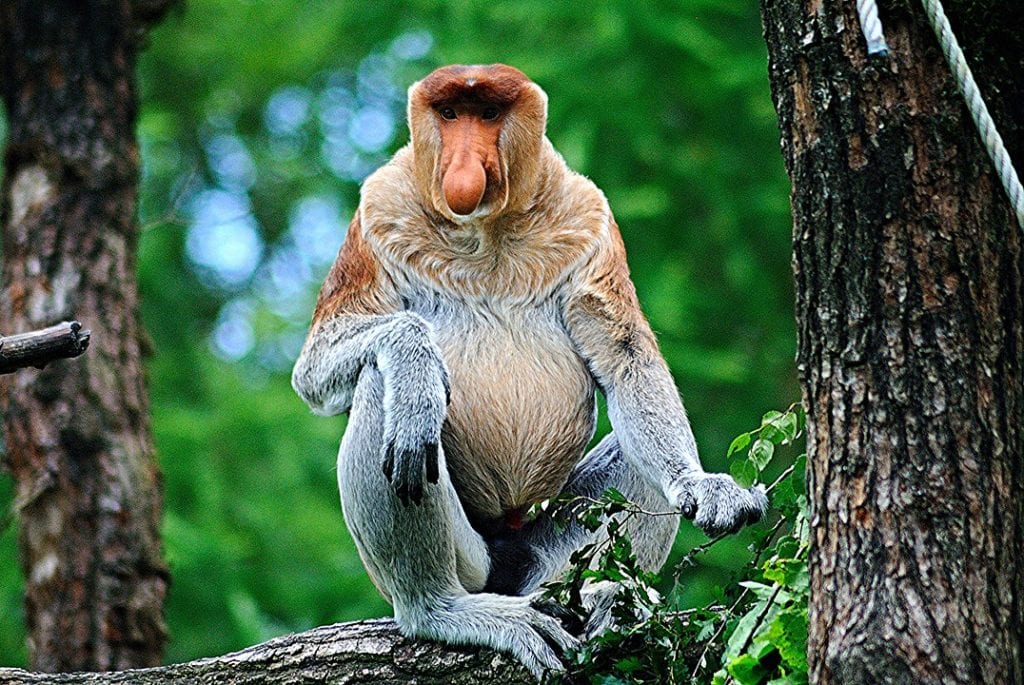
The proboscis monkey is endemic to the jungles of Borneo, a region of Southeast Asia. It encompasses three countries: Brunei, Indonesia, and Malaysia.
Habitat
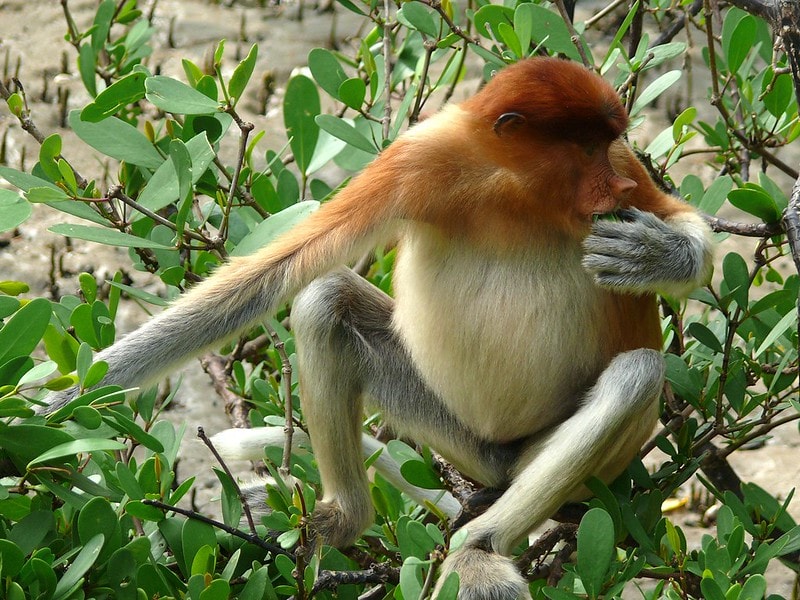
Preferring wetland habitats, these monkeys are native to the region of Borneo. They live in jungles, inhabiting rivers, swamps, and mangroves.
Proboscis monkeys are arboreal, which means they rarely leave the treetops. They may only come to land in an occasional search for food.
Although they’re arboreal, they rarely venture farther than 1,968.5 ft (600 m) from a water source. While moving about the forest, they use all four limbs to get around.
Diet
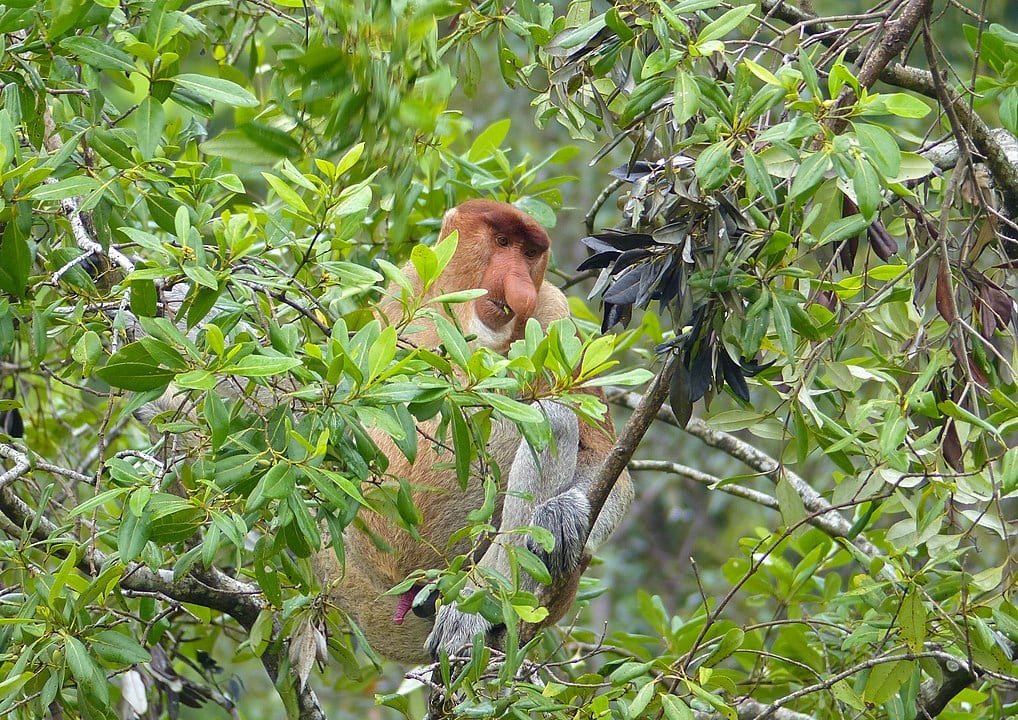
For the most part, proboscis monkeys are herbivorous. They prefer eating leaves, seeds, and unripe fruit.
They can’t consume ripe fruit as they may risk ingestion. Ripe fruits contain sugar which would ferment in the monkeys’ stomachs. This would cause bloating so severe it could kill them. They are also insectivores and sometimes dine on insects when available.
A Complex Digestive System
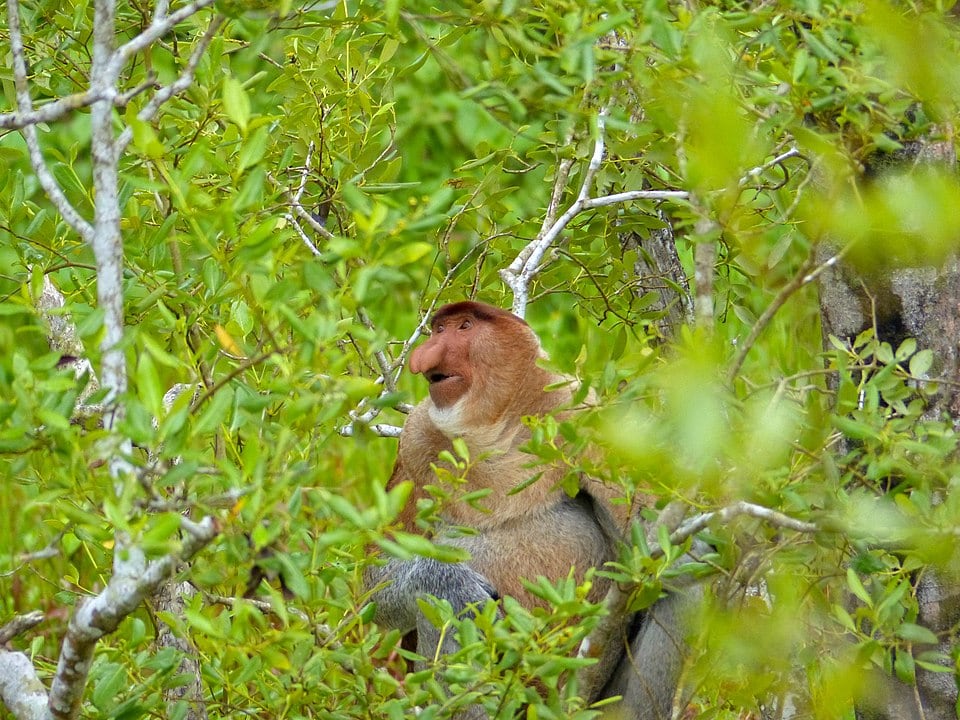
The way these monkeys digest their food is quite complex and interesting. They have chambered stomachs with good bacteria living in their gastrointestinal tract. Without this bacteria, proboscis monkeys can’t digest their food.
The bacteria work to break down plant matter entering the monkey’s stomach. This is necessary because plants contain cellulose, which is hard to break down.
To make the most of their food, proboscis monkeys need to chew and digest their food thoroughly. This is because their food is very low in nutrients. By breaking it down further, their bodies can absorb all the available nutrients in what they eat.
Because of this, these monkeys must eat a large amount of plant matter. This enormous amount of food intake leads to them forming a type of potbelly. With their large bellies and noses, these monkeys can seem very comical!
Behavior
Proboscis monkeys are social animals and are not to be territorial. This makes for interesting social behaviors among their species.
They Live In Harems
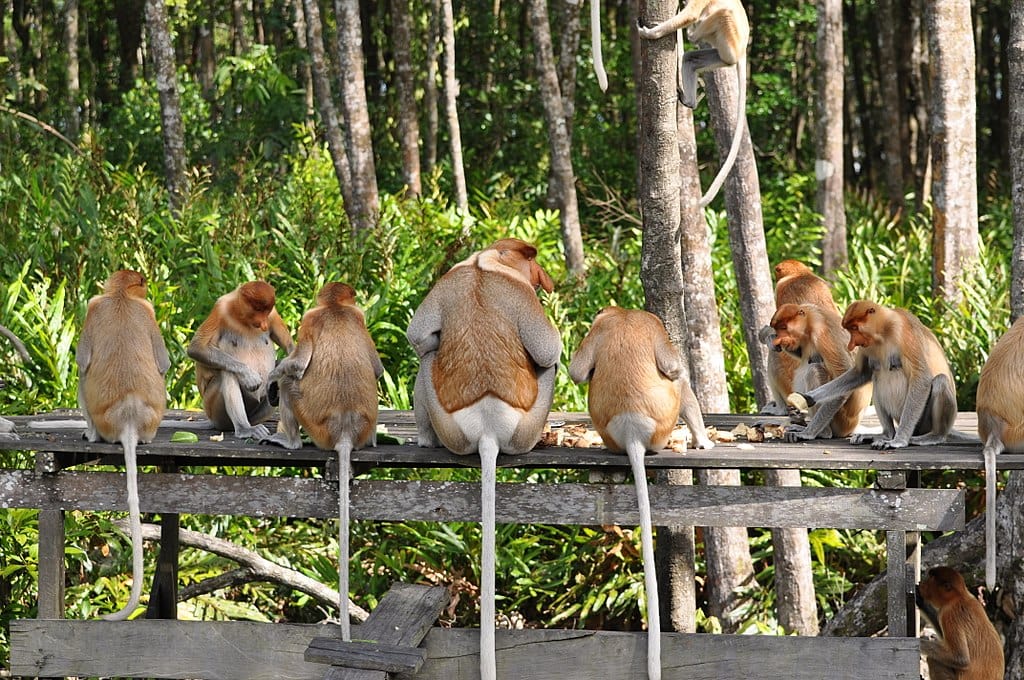
These monkeys are a social species living in groups called harems or bands. A dominant male heads the harem. The rest of the group generally consists of two to seven females and their offspring. Some groups may even include up to 30 individuals.
The male is very protective of his harem. He’s in charge of watching over and protecting its members. In the presence of threats, he bares his teeth and produces a honk-like sound. Females are responsible for caring for offspring and searching for food.
Although the groups are small, they aren’t overly territorial. Several groups often come together to sleep at night at the water’s edge. Together, these massive groups are safer against predators.
Amazing Swimmers
Proboscis monkeys rarely stray from their water habitats. They’re known to be better swimmers than any other primate species. They can travel at speeds of 15 mph (24 km/h).
With these swimming abilities, they can cross large bodies of water. They can also swim to depths of 66 ft (20.1m) underwater.
Swimming is such an essential part of their daily lives that they’ve found a way to make it fun. Watching these monkeys swim is like watching children play in a pool. They first dive into the water below with their bellies and make huge splashes.
Communication
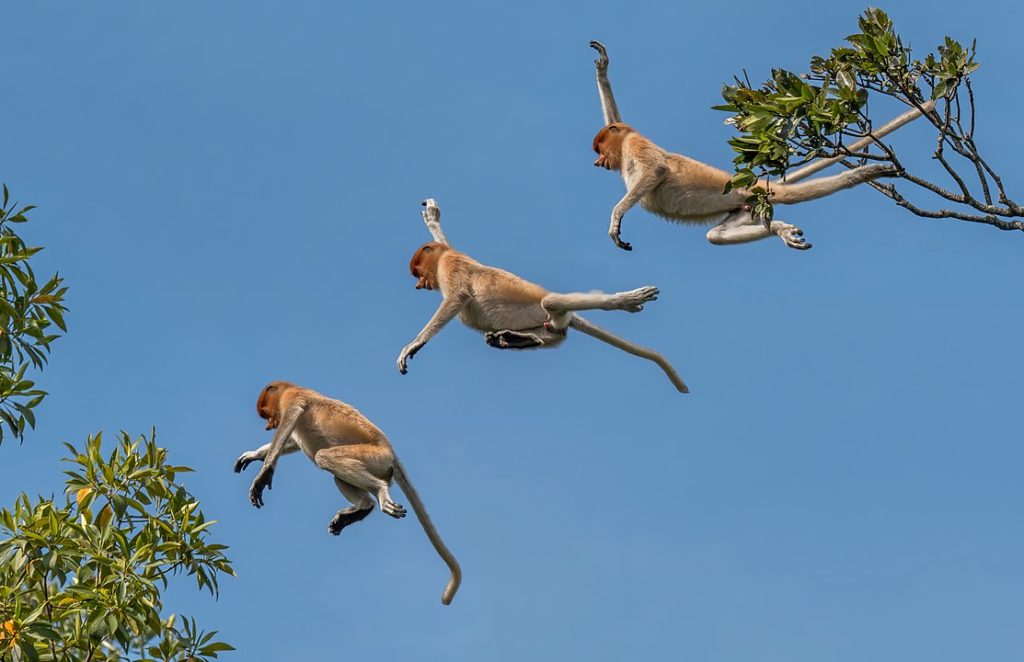
Being social animals, they have a complex form of communication. They have different calls to signal danger in the area or warn other monkeys to back off. They’re able to produce a variety of sounds such as honks, snarls, and roars.
These monkeys also take advantage of their body language to communicate. They may shake the branches of trees or bare their teeth when they feel threatened.
Mating
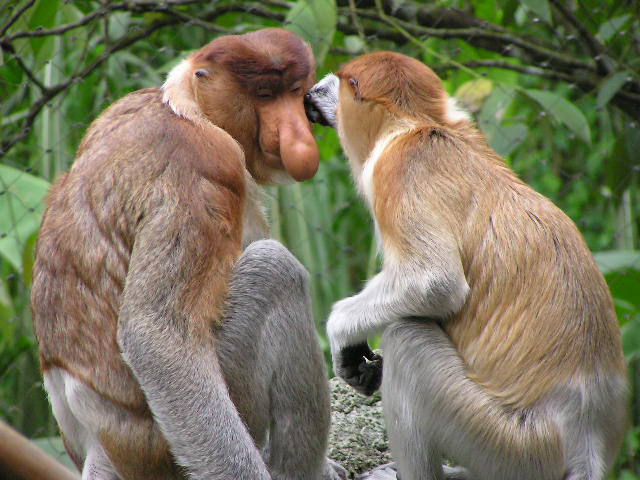
Researchers believe the proboscis monkeys’ large noses work as a type of echo chamber. These noses allow them to produce louder calls that travel further distances.
Using their noses, males produce a loud, raucous call to attract females. Not only do these calls impress females, but they act to scare away competing males.
In mating displays, males use the entire face, not just the nose. They put on a show of face pouting and other affectionate facial gestures to attract a mate. Like humans, these monkeys have a wide range of facial expressions.
Once a female has accepted the male’s display, she lets him know by pursing her lips. She will then shake her head from side to side and turn her rear side to him.
After finding a suitable mate, the actual act of mating only lasts about one minute. The female will continue to pursue copulation even after becoming pregnant.
Life Cycles & Life Span
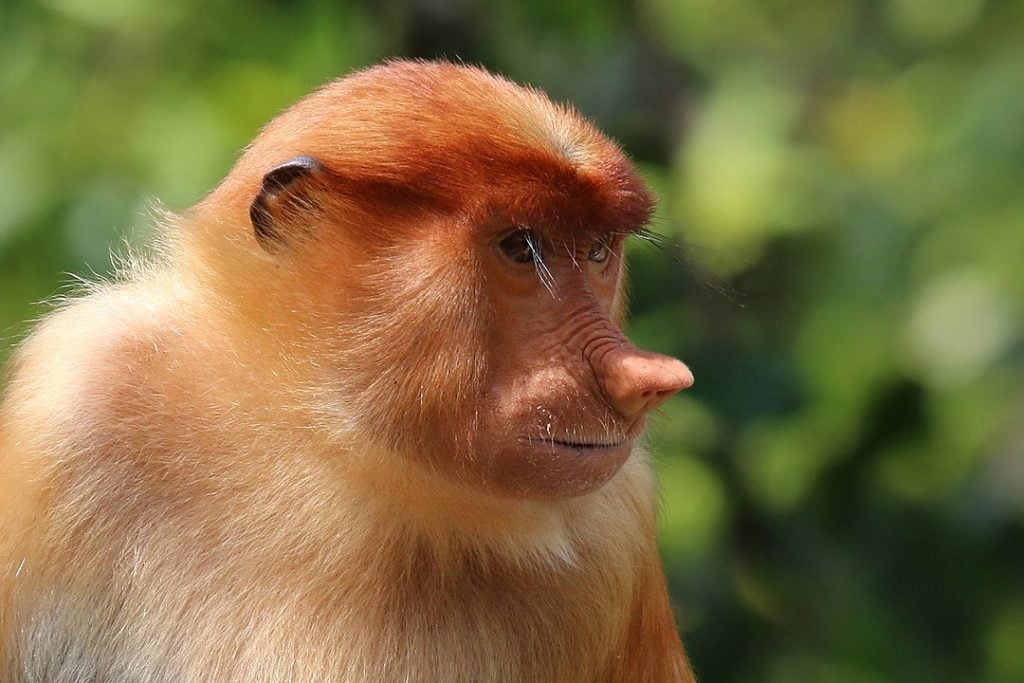
Proboscis monkeys live an average of 20 years. Considering their lifespan, they age at a similar rate to humans. They mature slowly, only reaching sexual maturity at about 4-5 years old.
Early Life
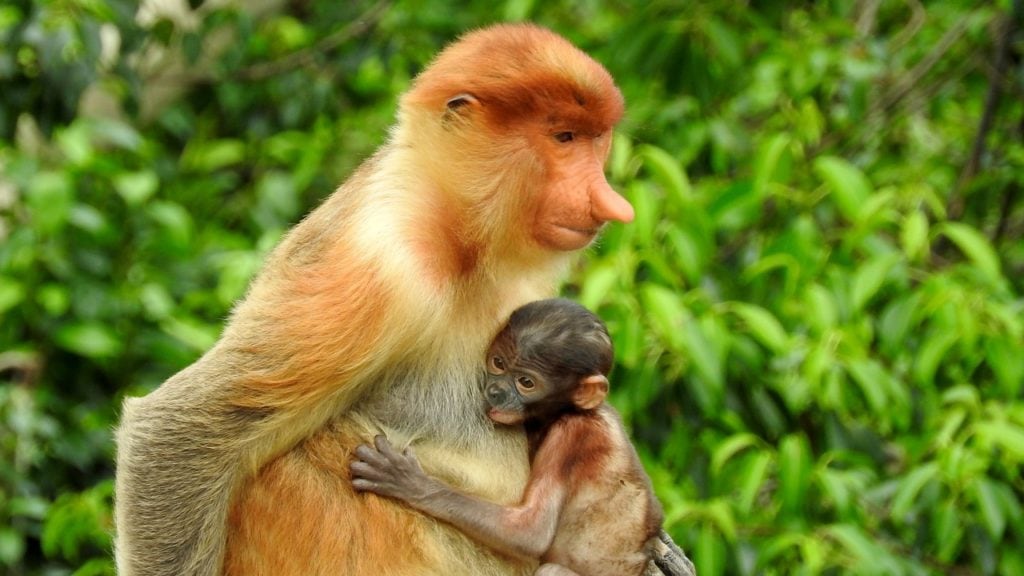
Breeding generally takes place between February and November. The dominant male hopes to produce a large number of offspring. To achieve this, he mates with many females in his group.
Mothers have an average gestation period of 166-200 days. They will generally only give birth to a single offspring. They mainly give birth under the cover of nightfall. During childbirth, the rest of the harem surrounds the mother for protection.
Once born, the babies have beautiful blue faces, which transition to a cream color as they age. Their young dark coats transition to light brown and gray in adulthood. This color transition generally begins around 3-4 months of age.
Growing Up
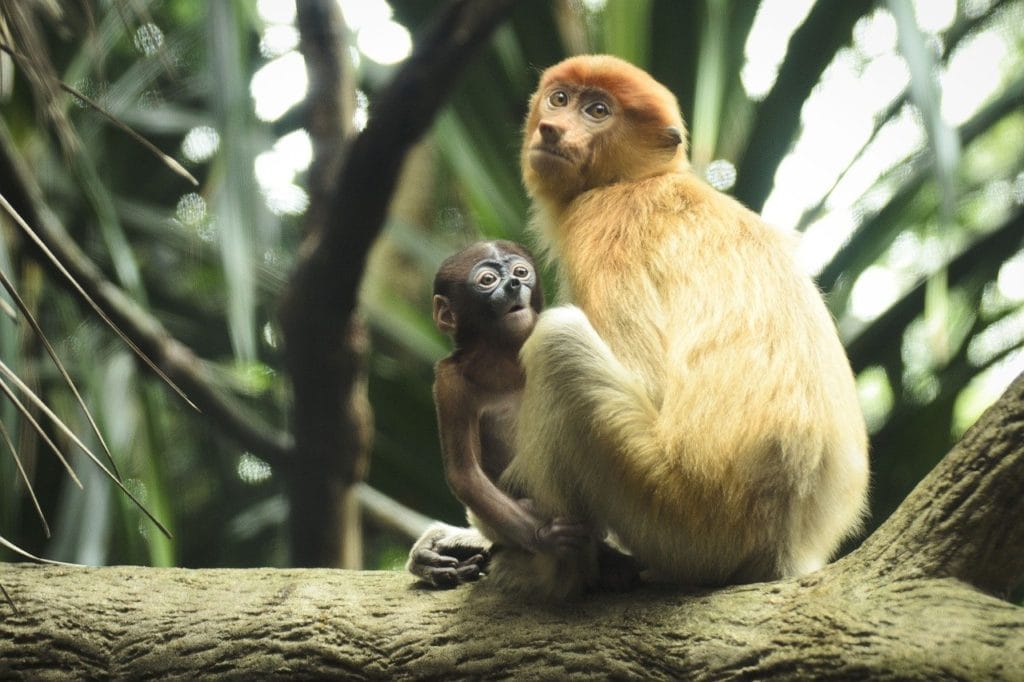
The mother nurses her offspring for up to seven months. The baby can then eat solid foods as early as six weeks old.
Raising offspring is a group effort, with each female helping to care for each offspring. Babies may even nurse from females who are not their mothers.
Independence
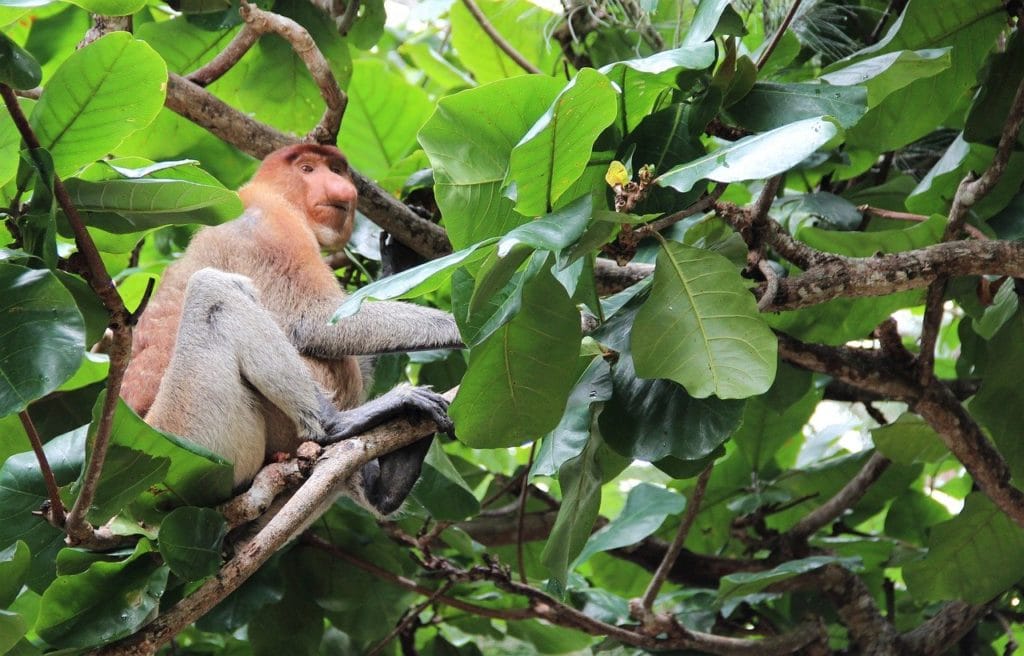
The baby is attached to its mother during the first year and will not leave her side. Once it’s about one year of age, the offspring becomes independent of the mother.
After one year, the mother usually gives birth to another baby. This forces the older offspring to become independent if they haven’t yet.
Female offspring usually stay with their original group even into adulthood. Meanwhile, males leave the group and form a bachelor group. This group is comprised of young males who have left their natal groups. When they reach sexual maturity, male monkeys develop their own harems.
Population & Conservation Status
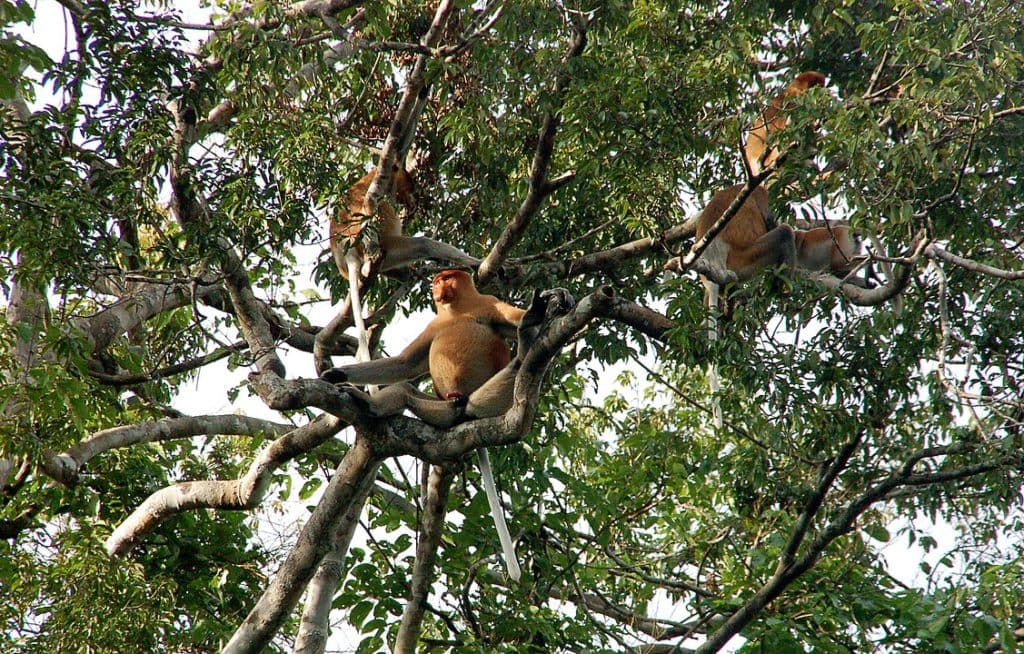
The International Union for Conservation of Nature (IUCN) is a global authority in protecting nature. In 2008, the IUCN Red List classified the species as “endangered”. They estimated the population size is about 7,000 individuals and decreasing.
Small populations of monkeys also live in Indonesia and Sarawak. There are 100-1,000 individuals in Indonesia and less than 1,000 in Sarawak.
Still, the monkey’s plummeting numbers have offered them protection by the government. Currently, the act of hunting and trapping proboscis monkeys is illegal across Borneo.
Threats & Predators
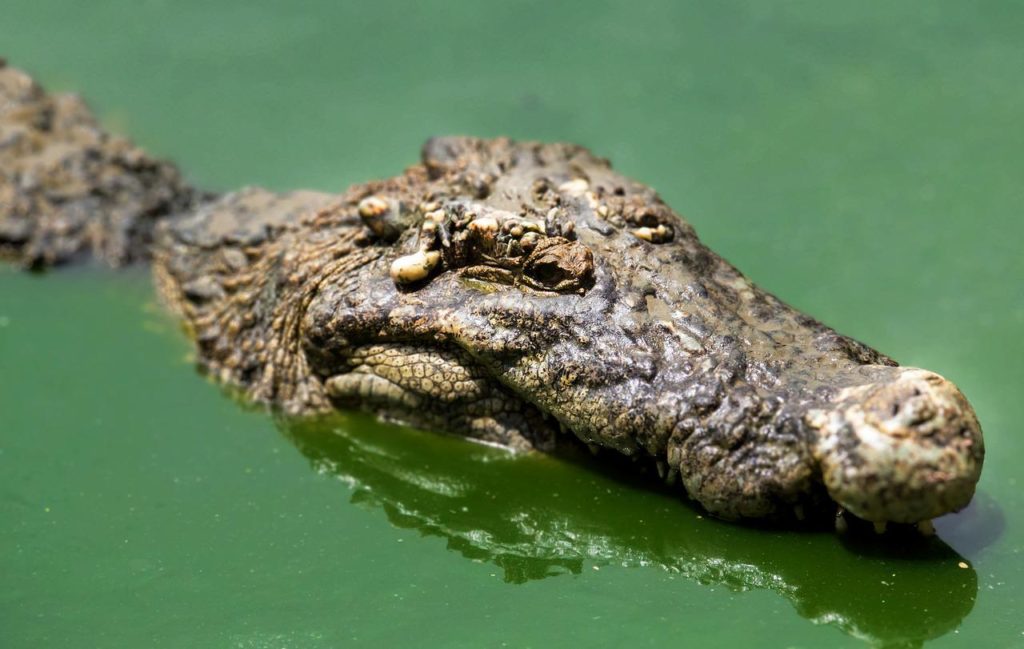
The critical predator for proboscis monkeys is the saltwater crocodile. Crocodiles frequent the waters where these monkeys swim, so they are a daily threat. But these agile monkeys have developed ways to escape their enemies.
Proboscis monkeys have webbed feet and hands. The extra flesh between their fingers and toes makes them fast swimmers. With these advantages, they can almost always outpace even the most formidable crocodile.
Deforestation

As jungle dwellers, proboscis monkeys are in danger of deforestation. Borneo’s jungles are torn apart to build new settlements and collect lumber and palm oil.
With deforestation destroying their food sources, they must come down from the treetops. They’re forced to travel along the ground, sometimes for long distances, to search for food.
In the treetops, they face predators like clouded leopards, pythons, and birds of prey. On the ground, jaguars and giant monitor lizards are their greatest threats.
They may also face predation by some of the local people who consider their meat a delicacy. Others hunt them for their body parts which are used in traditional medicine.
Ecological Role
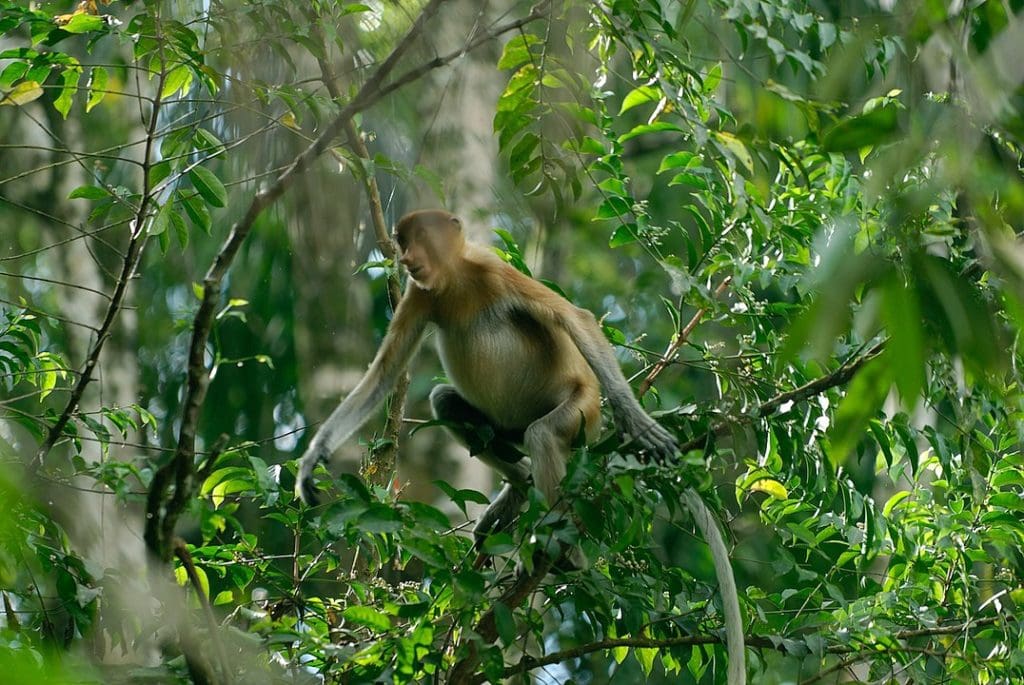
Researchers don’t understand the ecological role of proboscis monkeys very well. But it’s assumed the species helps keep plant populations in check. They’re also a good food source for predators.
However, proboscis monkeys are skilled in outmaneuvering their predators. This is why researchers aren’t sure how much they affect these predator populations.
You May Also Like: Wild Monkeys In Florida: All About Them And How They Got There
Proboscis Monkey FAQs
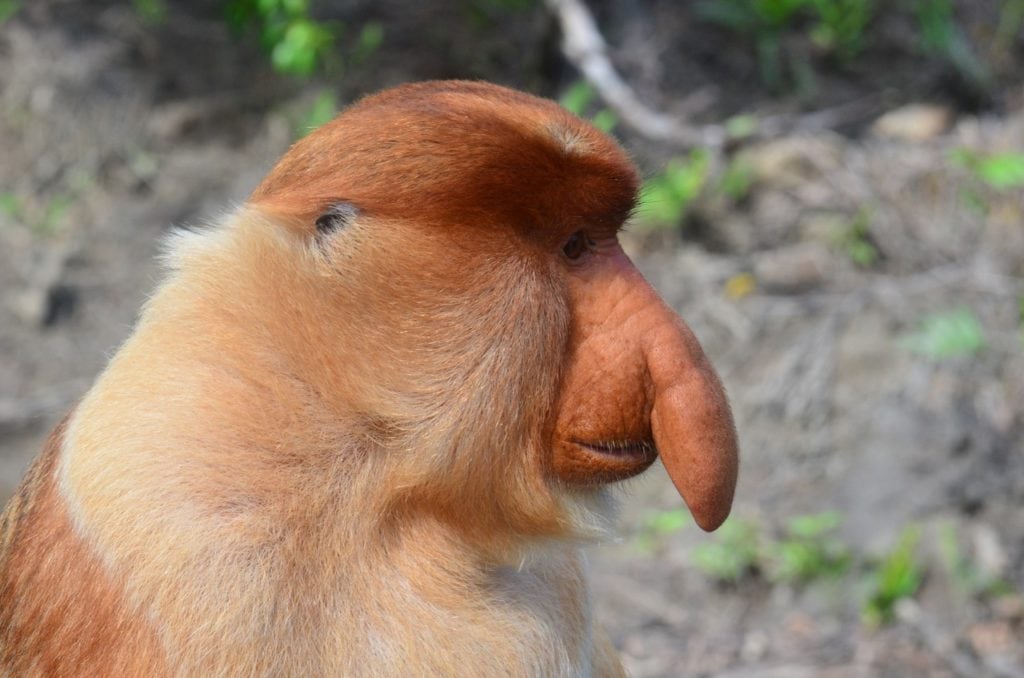
Do proboscis monkeys have nine stomachs?
Proboscis monkeys don’t technically have nine stomachs. But they do have nine chambers in their stomachs.
Their complex stomachs host a symbiotic relationship with beneficial bacteria. The digestive system of a proboscis monkey is also similar to cows.
Why is it called a proboscis monkey?
The word “proboscis” describes the snout of a mammal. It’s used to describe a nose that’s either very large or long.
The proboscis monkey gets its name from the males’ prominent noses. These noses are used for mating and defending harems. Other mammals with a proboscis include elephants and tapirs.
How many proboscis monkeys are there left in the world?
There are about 7,000 monkeys in the Borneo region. Unfortunately, the IUCN listed proboscis monkeys as endangered. Over the last 40 years, their populations have been quickly decreasing.
This is due to deforestation forcing them to search for food on the ground. Because they’re arboreal, this leaves them vulnerable to many land predators.



